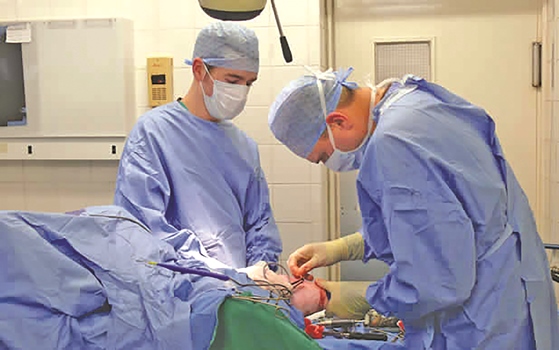Escalating Cesarean Section

Anita Basnet
The cesarean section rate continues to rise in many countries with routine access to medical services, yet this increase is not associated with improvement in perinatal mortality or morbidity. Globally, it has become the problem of both developed and developing countries.
Saving mothers, babies
Cesarean section once performed to save the life of mother or baby, are now offered as elective procedure in order to avoid the experience of labor and delivery. Studies show that women choose elective cesarean section in the belief that the surgery is safe and vaginal birth poses risk of harm to themselves or their child.
In addition, literature on cesarean section shows that these unwanted consequence of vaginal delivery result from the aggressive management of labor by obstetricians and midwives. It has been observed that the rude and annoying behavior of obstetrician and midwives like shouting at woman and providing episiotomy without the consent of women and her care provider made her forced in elective cesarean section.
Therefore, the new methods of normal delivery like sitting on ball or squatting position than lithotomy position facilitate fast delivery for her and thus can reduce the increasing rate of cesarean section.
Moreover, WHO favours 10-15% cesarean section rate and suggests to perform cesarean section only when justified by medical conditions. According to American College of Obstetrician guidelines, cesarean section should be only performed if there is the risk for the maternal and fetal health and maternal request should not be acknowledged if she is in labour since the woman can be in panic due to excessive labour pain.
But majority of obstetricians responds that the cesarean section are performed on maternal requests.
C-Section Rising
Cesarean section (C-Section) rate is sharply increasing in the most of the hospitals in Kathmandu Valley particularly in the private setting. A hospital based study done in Kathmandu Valley in November 2017 shows that cesarean section rate is highest in private hospitals like Om Hospital (81%), Medicare Chabahil (79%) B and B Hospital (67%) whereas it is comparatively low in public hospitals like Thapathali Maternity Hospital (17%) where majority of cases are referred from all over the Nepal. This clearly shows that the economic disparity is the major determinants for cesarean section.
The one who can afford usually goes for a private sector hospital and who cannot afford goes for public setting hospital. Studies also exemplify that women living in urban, with higher level of education on highest wealth quintile and nulliparous are involving unnecessarily in cesarean section.
Supporters of elective cesarean section believe vaginal delivery result in damage to the pelvic floor, which may lead to urinary incontinence, anal incontinence, sexual dysfunction or pelvic organ prolapse. However, the study shows that cesarean section can lead to significant and sometimes permanent complications particularly when not justified by medical condition i.e expose to woman to well-documented risks of death, disability and depression and of course increasing health cost.
High risk of infection, pain, breast-feeding challenges in post-operative period are also major complications after cesarean section. Also, the baby born by cesarean section cannot be consider as normal baby as the baby have high risk of hospitalisation, ventilation, respiratory morbidity and mortality, long term negative health effects like asthma, type-I Diabetes, obesity and metabolic disease.
Global Problem
Despite the medical indications, vaginal birth remains safer than a cesarean section for both mother and baby and of minimum cost. The vaginal delivery is comparatively quicker. Therefore, more research on improving the technology of pelvic floor repair need to be conducted. Thus, escalating the cesarean section is the global problem.
Proper policy from government side should be reformed to minimize it. It is essential to educate reproductive age women by providing factual evidence based accurate information on mode of delivery and its implication.
Regular accessing, monitoring and comparing cesarean section rates within health facilities from time to time. The cesarean section should not be conducted for the purpose of money unless medically recommended.
(Basent is pursuing Master's Degree in Public Health)
Recent News

Do not make expressions casting dout on election: EC
14 Apr, 2022
CM Bhatta says may New Year 2079 BS inspire positive thinking
14 Apr, 2022
Three new cases, 44 recoveries in 24 hours
14 Apr, 2022
689 climbers of 84 teams so far acquire permits for climbing various peaks this spring season
14 Apr, 2022
How the rising cost of living crisis is impacting Nepal
14 Apr, 2022
US military confirms an interstellar meteor collided with Earth
14 Apr, 2022
Valneva Covid vaccine approved for use in UK
14 Apr, 2022
Chair Prachanda highlights need of unity among Maoist, Communist forces
14 Apr, 2022
Ranbir Kapoor and Alia Bhatt: Bollywood toasts star couple on wedding
14 Apr, 2022
President Bhandari confers decorations (Photo Feature)
14 Apr, 2022











